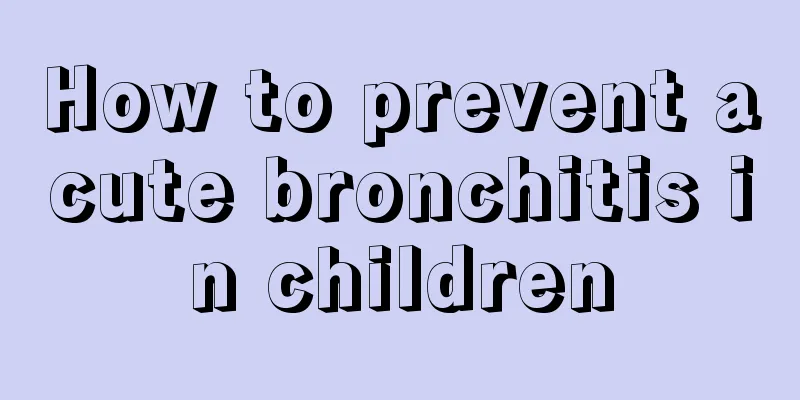Treatment of neonatal hip dislocation

|
There are many common diseases in newborns. Newborns need to be treated in time after they suffer from diseases to prevent the diseases from becoming more serious and causing more damage to the newborn's body. Neonatal hip dislocation is common. When such a problem occurs, parents should also respond in time to improve the problem of neonatal hip dislocation. What are the coping methods? Corresponding methods for neonatal hip dislocation; Congenital dislocation of the hip is present when the baby is born. The main reason is that when the mother is 2 to 3 months pregnant, the fetus's growth stops due to a cold, fever or other illness, and the joints do not develop normally, resulting in dislocation. Young parents must pay attention to check and treat it in time, otherwise the baby’s legs will not be able to bear the force when they grow up and they will feel unbearable pain when walking. A simple way to check is to have your baby lie down with her hips spread out to the sides (knees at right angles and thighs perpendicular to the body). If the baby's legs are stiff and cannot be spread out, it is basically certain that he has this disease; if the stripes on the baby's thighs are asymmetrical and the legs are of different lengths, it is often this disease. However, some mild dislocations and subluxations are difficult to diagnose through manual examination, and the baby has a lot of fat on the legs, so the length of the legs is also difficult to determine. Therefore, infants under 6 months old can undergo ultrasound examination to confirm the diagnosis. It should be noted that since the bones of babies under 6 months old have not calcified and ossification centers have not yet appeared, X-rays will only show a blank screen. Therefore, do not let your baby suffer from X-ray harm in vain. X-rays can be used to confirm the diagnosis for babies over 10 months old. Early diagnosis and treatment of congenital hip dislocation are very important. After the diagnosis is clear for babies aged 3 to 6 months, they can be fixed with a special sling. More than 95% of them can be cured after 3 months. This treatment method does not damage the joints and has few complications. For babies around 1 year old who start to walk, the dislocated joint needs to be reduced first, then they need to be put in a frog-like cast for 3 months, and then fixed with a frog-like brace for 9 to 12 months before they can return to normal. Children over 2 years old need surgery and then plaster cast. Children aged 4 to 7 must undergo surgery to recover. For the same operation, the younger the baby is, the better the effect; the older the baby is, the greater the surgical trauma and the worse the effect. After understanding the coping methods for neonatal hip dislocation, parents can follow the above methods to relieve the symptoms when the neonate has hip dislocation. However, for severe neonatal hip dislocation, it is also necessary to choose the treatment method according to the doctor's advice, which will be of great help in the treatment of neonatal hip dislocation. |
<<: Preventive nursing of neonatal adrenal hyperplasia
>>: Rehabilitation training methods for children with cerebral palsy
Recommend
What can babies eat to get better quickly from enteritis and diarrhea?
The physical health of babies has always been one...
The harm of secondhand smoke to children
Nowadays, there should be many people who smoke a...
My forehead is not burning, but my stomach and body are hot.
Fever is a common phenomenon, especially for chil...
Treatment of tonsillitis in children
Children are particularly susceptible to tonsilli...
What to do if your child coughs, especially after sleeping
Children are more likely to cough when they have ...
What are the prevention and control measures for hand, foot and mouth disease?
Hand, foot and mouth disease is a human comorbidi...
Symptoms and treatment methods of spleen deficiency in children
When children show symptoms of poverty, parents s...
What to do if your 8-month-old baby can't crawl
Nowadays, due to environmental restrictions, many...
What causes moles in children?
There may be some misunderstandings about moles, ...
How to treat strabismus in children?
Strabismus is actually very easy to explain. When...
What are the benefits of baby spinach puree?
The baby's body is fragile, so we need to pay...
What are some foods that aid digestion for children?
Nowadays, many children have some indigestion pro...
Why does a 5-year-old child have knee pain?
During the growth process of a child, different s...
What to do if your child has poor liver function
If a child's liver function is not good, the ...
How to deal with a child who has a fever and cold limbs?
Children have very poor physical constitutions. I...









